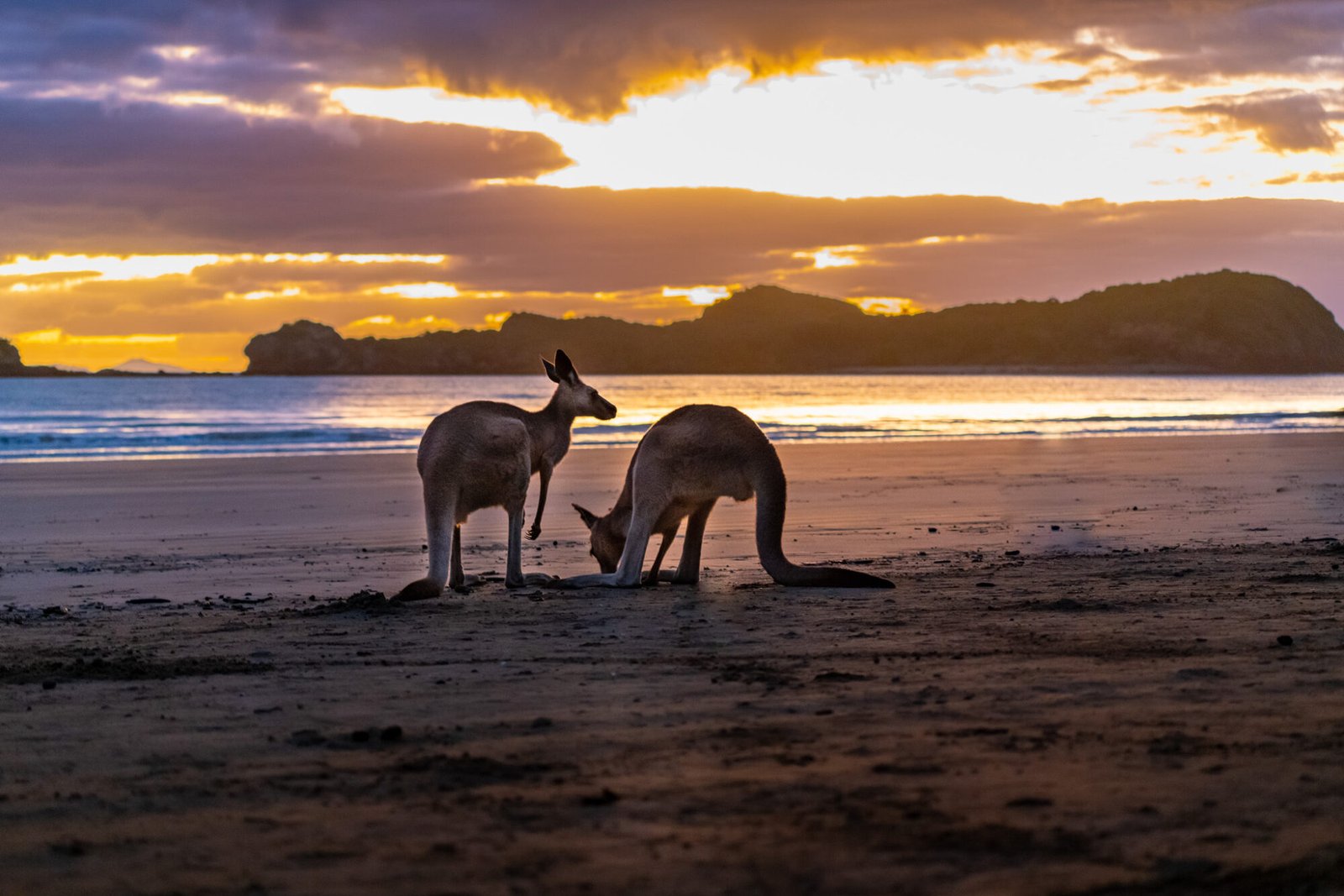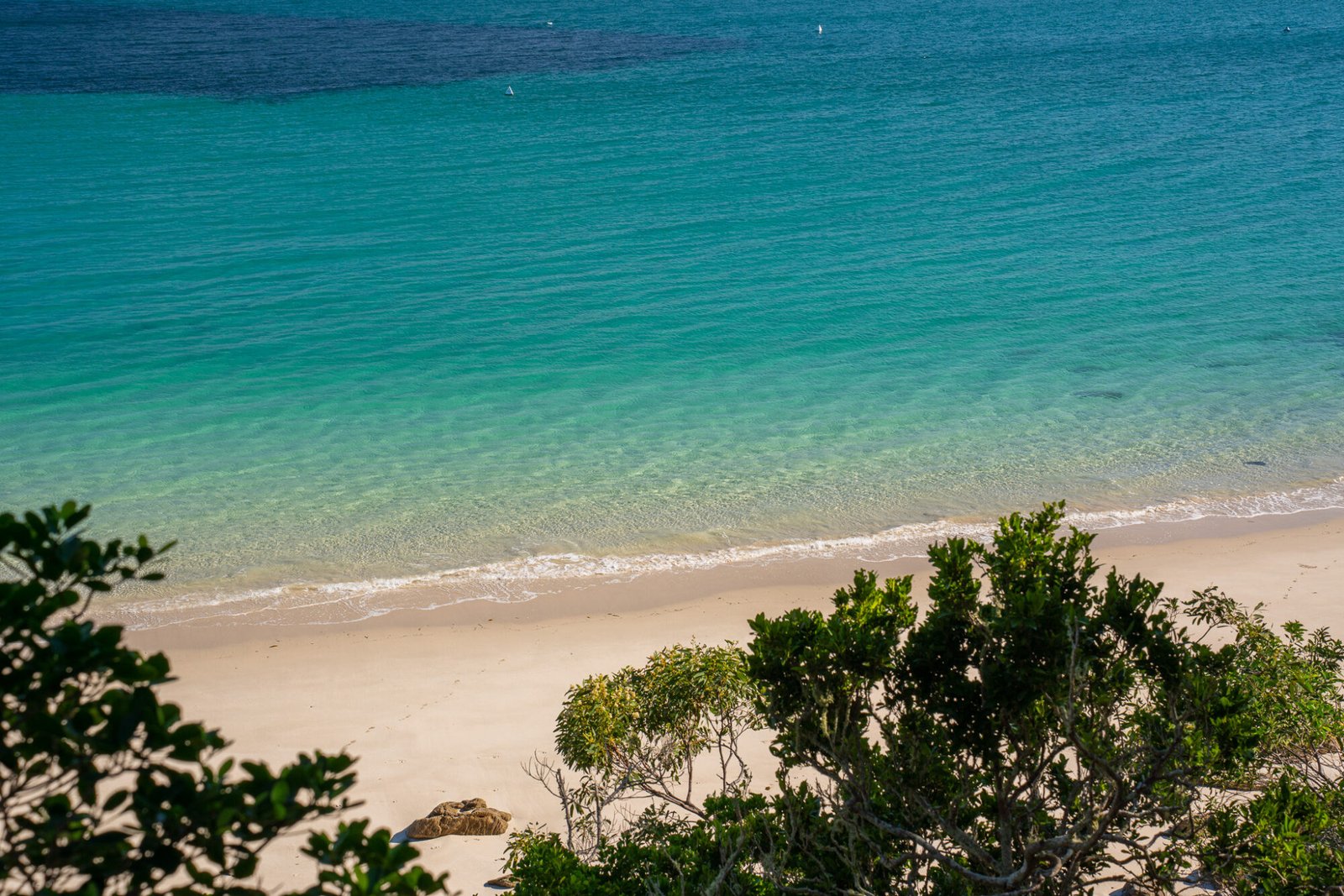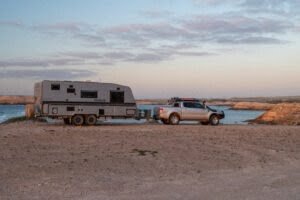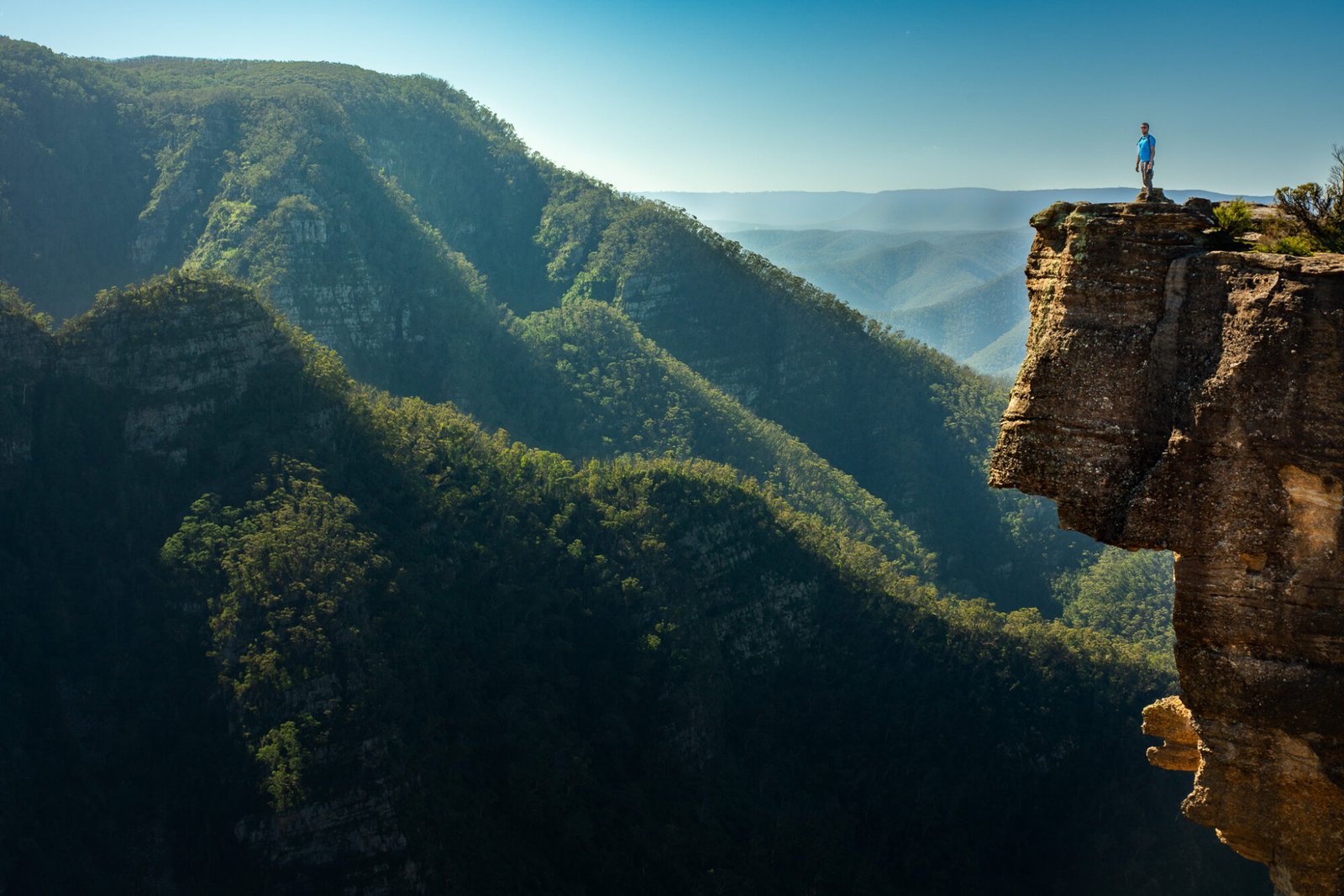The day we arrived in Esperance was a hot, blustery day and after being on the Nullarbor for the past few days, staring out at ocean that we couldn’t reach, we were seriously craving some beach time. So when we pulled into town, our first order of business was to ask the caravan park manager where we could find the best beach to go to on a windy day. Now she didn’t exactly look like the beach-going type – probably should have been a bit of an indicator – but we took her advice and headed straight to the beach she recommended, which was…ok. Nice, but not one of the legendary postcard-perfect beaches we had heard were plentiful in Esperance. We left the beach feeling a bit underwhelmed; however, not to be deterred, we decided to take a drive along the Great Ocean Coastal Drive, a 40km loop that heads west out of Esperance along the coast, then turns back through wind farms and a pink lake before returning back to town. We started off at the Rotary Lookout, where stretched out before us was the most picturesque coastline we’d seen yet.

From here it was one impeccable beach after another, each one with pure white sand and clear turquoise water. Our favourites were Blue Haven, a small patch of clean sand and calm water despite the high winds, and Twilight Beach, a great protected spot for paddle boarding or snorkelling out to the nearby rock formations. We capped off the day with a visit to Lucky Bay Brewing, which was a very welcomed change to the cheap-o beers we had subsisted on for the past few weeks.

After another day in Esperance catching up on various things, we did the short and easy drive to Cape Le Grand National Park. In the park there are two campgrounds available, Lucky Bay and Le Grand Beach. Lucky Bay campground has the advantage of being more centrally located, especially to the main attraction of the local kangaroos that enjoy lounging on the beach (can’t blame them with a beach like that!), but Le Grand Beach campground has a nicer, smaller campground, with vegetation separating each site for a bit of privacy.

Whichever camp you choose, try to book in advance as much as you can, as these campgrounds are extremely popular and book up quickly. Wanting to get the full experience, we stayed at each one for one night, starting with Lucky Bay. Once we were set up we walked to Thistle Cove, which is part of the Le Grand Coastal Track, an 18km walking track following the coastline from Le Grand Beach to Rossiter Bay.

Along the hike we got sweeping views of Lucky Bay, experienced the Whistling Rocks, and explored the cliffs overlooking Thistle Cove and the beach, with plenty of dragon lizards spotted along the way.

After this stunning walk, we paid a visit to Hellfire Bay and the equally beautiful but much less busy Little Hellfire Bay, before heading back to Lucky Bay to hang out with the “locals.” The roos are around throughout the day but are best spotted in the mornings and evenings when they’re generally more active.

The next day we got up super early to climb to the top of Frenchmans Peak for sunrise. The peak rises up 262 meters from the relatively flat surrounding bushland and is an imposing presence in the park. Its name comes from early explorers who thought the rock formations atop the peak looked like the hat French soldiers wore. The climb starts by meandering through the bushland but very quickly reaches the base of the rock and from there, it’s pretty much straight up (give yourself at least 30-40 minutes to get to the summit) but once you’re there, you‘ll forget all about your burning calves and lungs as you enjoy 360 degree views over Cape Le Grand, the Southern Ocean, and back to Esperance.

To watch the sun rising over the horizon just makes it all that more magical. It’s also worth finding the entrance to the cave under the “Frenchman’s Hat”, formed millions of years ago when waves from an inland sea carved it out.

Afterwards we moved along to the Le Grand Beach campground, and once we had found ourselves a nice spot to park the van, we drove onto Le Grand Beach and spent most of the day relaxing there, finishing with one of WA’s epic sunsets over the ocean, the first of what will likely be many for us.

The next day we stopped at the a camp in Condingup with one destination in mind: Wharton Beach in Duke of Orleans Bay. Sitting between Cape Le Grand and Cape Arid National Parks, it often gets overlooked as people travel from one park to another, but it‘s well worth the detour. Wharton is a small, quiet town, which means your chances of having a crowd joining you on the beach are minimal.

But even if there are more than a few people around, the beach stretches out around the bay, so you can be almost guaranteed to find a little bit of paradise all to yourself. We became so enamoured with this beach that we dubbed it our favourite beach (of the trip so far!). This beach manages to be great for swimming, snorkelling, SUPing, and/or surfing depending on the swell and which way the wind is blowing…we did a bit of all of the above on the same day! If fishing is your thing, head over the gravel track to Little Wharton Beach, which has plenty of options for beach or rock fishing. Wharton really has something for everyone!

Our next destination was Cape Arid National Park, a much larger and more remote version of Cape Le Grand. With our caravan, Thomas River was the only accessible campground, and there we had two options: Belinup or Yokinup Mia Mia. After scoping the two out, we thought Yokinup was a much better option because it had more vegetation around sites and better views over the bay. After unhitching the van, we drove along the rough Balladonia Track, which is a sort of shortcut to get to Esperance from the Nullarbor, to Mount Ragged.

The trail to the top of Mount Ragged, its tallest peak (Tower Peak) standing at 594m, is 1.2km long, which doesn’t sound like much but it’s also about a 400m climb! Needless to say, we were stuffed by the time we made it to the top and took our time enjoying the view, although the surrounding landscape is fairly flat and featureless.

On return, we attempted to explore more of the national park but quickly found the tracks to be overgrown and extremely scratchy, something we would later find to be fairly common in Western Australia. We had also planned an overnight trip to Israelite Bay, but with the weather not really in our favour and our experience on the park’s tracks not being particularly enjoyable up until that point, we decided to stay close instead. The beaches in Cape Arid, such as Dolphin Cove and Little Tagon Beach, easily rival those of Cape Le Grand in regards to beauty but seemed to be fairly rough and less swimmer-friendly, so we admired them from the lookouts instead before enjoying our evening back at camp amongst the birds and banksias.

We left Cape Arid the next day and, after another stop at Wharton Beach (we just couldn’t resist!), we found ourselves back in Esperance, ready to see what other treasures south WA had in store for us!





